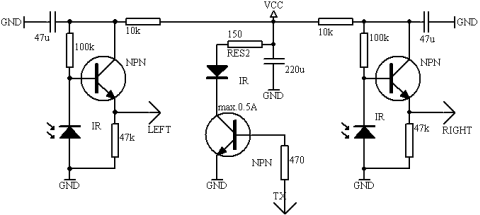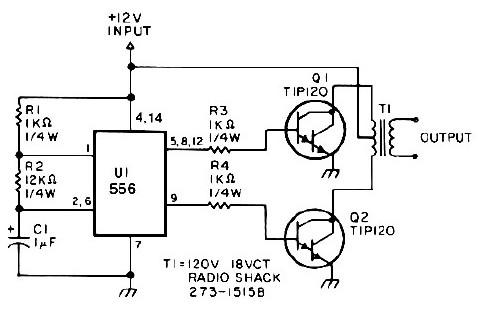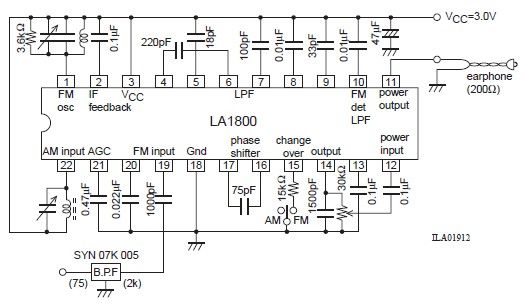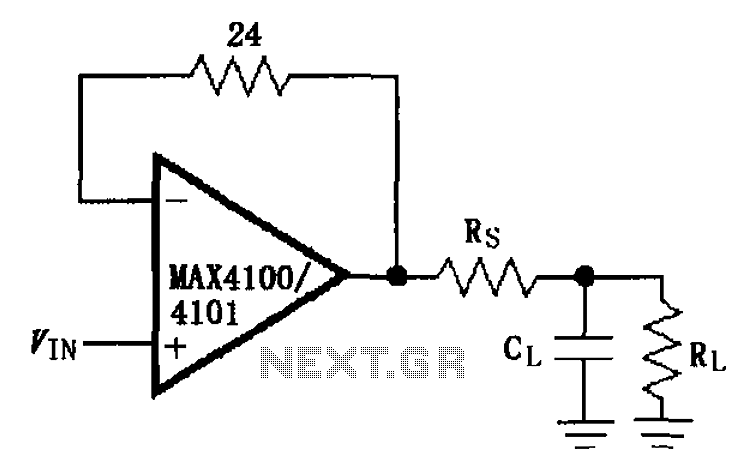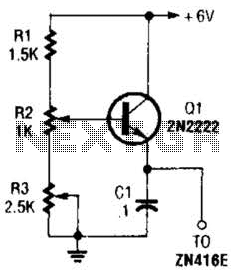
Stereo Preamplifier with adjustment tone circuit
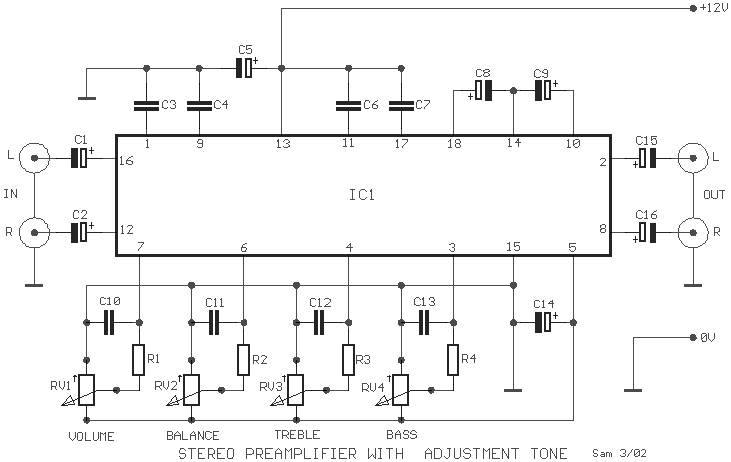
A simple preamplifier circuit is often required, utilizing a few components for ease of construction. This circuit employs an operational amplifier, specifically the Motorola TCA5550, which features a dual amplifier configuration. It provides outputs for adjusting volume, balance, treble, and bass. All parameter adjustments are made using monophonic linear potentiometers, significantly enhancing the ease of manufacturing. The placement of these potentiometers should be as close as possible to IC1 to minimize noise. The circuit operates without requiring a large current for functionality.
The described preamplifier circuit leverages the Motorola TCA5550 operational amplifier, which is designed for audio applications due to its low noise characteristics and high gain. The TCA5550 is a dual op-amp, allowing for multiple signal processing paths within a single package. This feature is particularly beneficial for audio applications where multiple adjustments, such as volume, balance, treble, and bass, are required.
To construct the circuit, a basic schematic would include the TCA5550 connected in a non-inverting configuration to provide gain to the audio signal. The input from the audio source connects to the non-inverting input of the first op-amp, while the output is fed back through a resistor network that sets the gain. The output from this stage can then be routed to the second op-amp for further processing, where additional potentiometers for balance, treble, and bass are integrated.
The use of linear potentiometers for adjustments allows for smooth and intuitive control over the audio output. Each potentiometer should be connected to the appropriate input of the op-amp, with careful consideration given to the layout of the circuit. Keeping the potentiometers close to the TCA5550 minimizes the potential for noise interference, which is crucial in audio applications where clarity is paramount.
Power supply considerations for the circuit are also essential. The TCA5550 typically operates within a specified voltage range, and adequate decoupling capacitors should be placed near the power supply pins to ensure stable operation. The circuit does not demand high current, making it suitable for battery-powered applications or low-power designs.
Overall, this preamplifier circuit design is an efficient and effective solution for basic audio signal amplification and processing, suitable for various applications where simplicity and performance are required.Many times we needed to use a simple circuit of preamplifier, with few components and facility of made. This circuit use a opamp. the Motorola, TCA5550, that contains a double amplifier, as outputs for the adjust of volume, balance, treble and bass.
These adjustment of all parameters become from a line monophonic linear potesometers, increasing by far the facility of manufacture. The placement these potesometers should become as much as possible, more near in IC1, so that is minimised the noise.
The circuit does not require big current in order to it work.. 🔗 External reference
The described preamplifier circuit leverages the Motorola TCA5550 operational amplifier, which is designed for audio applications due to its low noise characteristics and high gain. The TCA5550 is a dual op-amp, allowing for multiple signal processing paths within a single package. This feature is particularly beneficial for audio applications where multiple adjustments, such as volume, balance, treble, and bass, are required.
To construct the circuit, a basic schematic would include the TCA5550 connected in a non-inverting configuration to provide gain to the audio signal. The input from the audio source connects to the non-inverting input of the first op-amp, while the output is fed back through a resistor network that sets the gain. The output from this stage can then be routed to the second op-amp for further processing, where additional potentiometers for balance, treble, and bass are integrated.
The use of linear potentiometers for adjustments allows for smooth and intuitive control over the audio output. Each potentiometer should be connected to the appropriate input of the op-amp, with careful consideration given to the layout of the circuit. Keeping the potentiometers close to the TCA5550 minimizes the potential for noise interference, which is crucial in audio applications where clarity is paramount.
Power supply considerations for the circuit are also essential. The TCA5550 typically operates within a specified voltage range, and adequate decoupling capacitors should be placed near the power supply pins to ensure stable operation. The circuit does not demand high current, making it suitable for battery-powered applications or low-power designs.
Overall, this preamplifier circuit design is an efficient and effective solution for basic audio signal amplification and processing, suitable for various applications where simplicity and performance are required.Many times we needed to use a simple circuit of preamplifier, with few components and facility of made. This circuit use a opamp. the Motorola, TCA5550, that contains a double amplifier, as outputs for the adjust of volume, balance, treble and bass.
These adjustment of all parameters become from a line monophonic linear potesometers, increasing by far the facility of manufacture. The placement these potesometers should become as much as possible, more near in IC1, so that is minimised the noise.
The circuit does not require big current in order to it work.. 🔗 External reference
